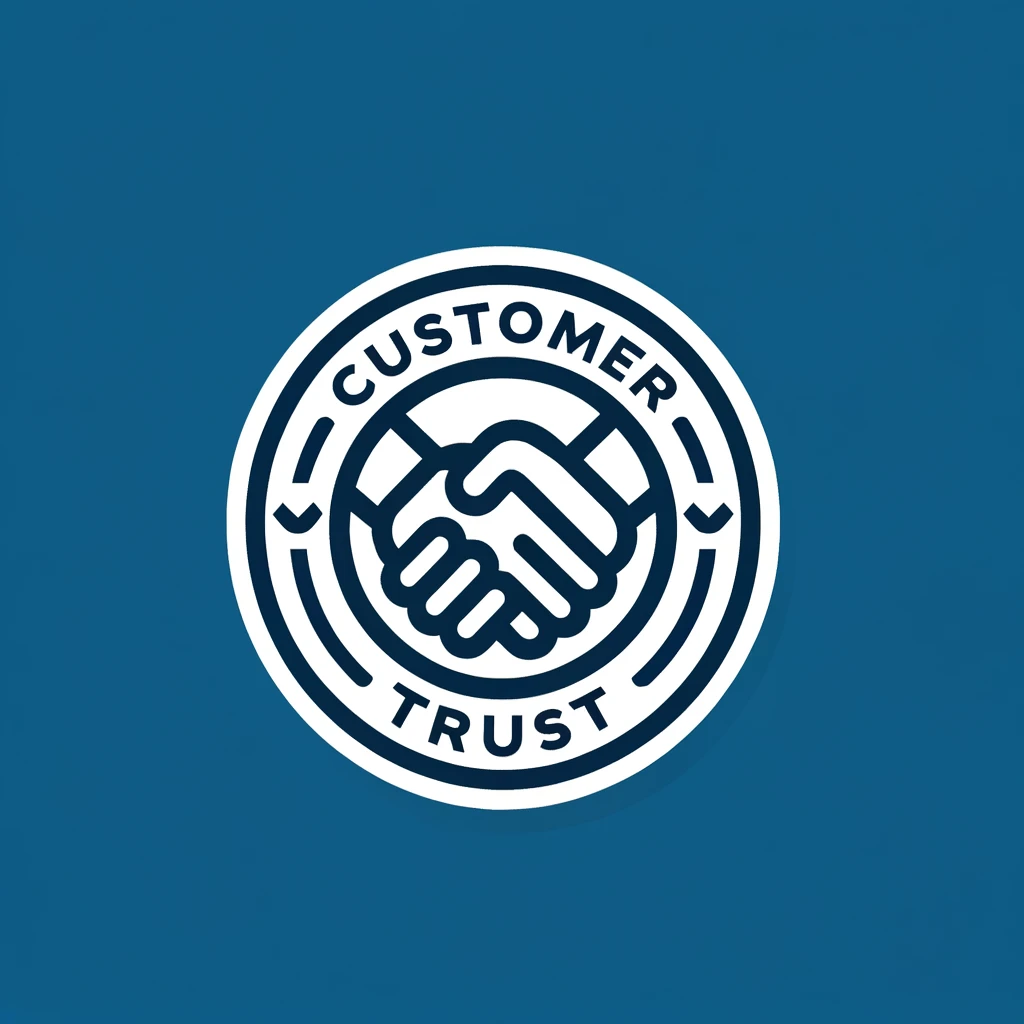How to Strategically Use Reverse Logistics to Improve Customer Retention

How Reverse Logistics Impacts Customer Retention
Many online businesses face challenges related to online shopping and returns. Early e-commerce sites like Zappos and Amazon set a high standard for offering consumers free shipping on the front end to receive the products and free shipping if they decide to return the items later. This has forced other retailers to figure out how to offer a similar level of service to attract and retain customers.
Without a streamlined reverse logistics process, returns can be a hassle and cost your company a lot of money. A simple and efficient returns process can lead to repeat customers and boost sales without costing more money. Let’s explore the benefits of investing in a strong reverse logistics strategy.
Builds Customer Trust & Loyalty
Effective reverse logistics is a critical factor in customer retention. Focusing on creating a robust returns policy ensures you consistently meet customer expectations post-purchase, building trust and loyalty. Implementing this improves the overall post-purchase experience and boosts customer satisfaction. Learn about post-purchase behavior to help improve customer retention.

Creates a Positive Brand Image
Your brand image is the face that your company shows the world. Efficient reverse logistics practices enhance the image you present. Ensuring a smooth and reliable returns process reinforces customer satisfaction and trust. This commitment not only meets but often exceeds customer expectations, giving you a reputation as a customer-centric brand.
Enhanced Efficiency for Returns
Returns management optimizes the speed and accuracy of the returns process. A business that efficiently handles returned items can reduce processing times, minimize errors, and enhance customer satisfaction. Everything folded together reinforces a positive shopping experience.
Reverse Logistics Shapes the Post-Purchase Experience for Shoppers
Effective reverse logistics transforms the post-purchase journey into a positive experience. This can be one of many effective customer retention strategies. A seamless returns process can turn potential frustrations into opportunities for brand reinforcement, encouraging customers to return and making them feel valued and understood.
How to Improve Customer Retention and Streamline Reverse Logistics
Improving customer retention requires a streamlined reverse logistics process that is both efficient and customer-focused. By refining how your brand handles returns & even offering pre-order opportunities, businesses can foster loyalty, boost the customer experience, & encourage repeat business.
Create a Flexible but Clear Returns Policy
A reverse logistics process begins with your returns policy. If you don’t have one written out and readily available on your website, that could cost you. Surveys reveal that more than 60% of people review a returns policy before making an online purchase, and 80% expect the returns process to be easy. Even if you offer merchandise credit or exchanges (rather than full refunds), the process still needs to be easy for the customer.
Display the information about returns prominently on your website so it’s easy to find. In addition, make sure all your staff and customer service agents have a copy of the policy and follow it consistently with every customer.
Consider Free or Low-Cost Returns
Offering free or low-cost returns can dramatically increase customer satisfaction and encourage loyalty. Retailers like Amazon have created expectations for these options. If your business can minimize the cost of returns, you can meet these expectations. You can also enhance your brand’s appeal, making customers more likely to return and recommend your store to others.
Digitize & Automate Your Reverse Logistics Process
Manual returns are a hassle and are more likely to result in errors (like missing a refund or credit, which can anger and frustrate your customers). They also make it harder to track the products coming back so you can make informed decisions about the next steps.
Creating a digital trail from the first moment a customer initiates a return to when the product is resold or disposed of can help you maximize profit or minimize losses on returns. It’s also helpful to have it all in a single software platform. That way, everyone—from the customer service representative to the warehouse stocker and the refund processor—knows what is going on without manually transferring information back and forth.
Create Easy-to-Use Return Labels
Easy-to-use return labels simplify the return process and, in turn, boost customer satisfaction. Incorporating a straightforward Return Merchandise Authorization (RMA) system allows customers to initiate returns without hassle. This speeds up the returns process and reduces errors and customer frustrations.
Track Return Items That Come Back
Many companies lose money on returned items by is simply losing track of them once they arrive back in the warehouse or facility. Some seasonal items or other personal items may not be re-sellable. Still, you can often restock and sell returned merchandise, even if at a discount. Defective items can usually go back to the vendor, but specific timeframes may exist around it. In other cases, you may donate items and take advantage of tax breaks.
A robust reverse logistics process is the key in all of these situations. It must immediately identify what you can do with a returned item, then quickly take steps to maximize the value of an item after it returns to your store or warehouse. The more time that goes by, the less valuable your items will be, and the fewer options you are likely to have for disposing of them in a way that recoups some of the COGS.
Use Data to Improve Returns Management
Tracking data & information about your returns—why it was returned, how often, and from where—can help you identify changes on the front end to reduce returns. For example, suppose you keep getting returns with complaints of a product that doesn’t work. When this happens, you can pressure your vendor to supply better products or find an alternative source. If you get a lot of clothing returns for sizing issues, adding a sentence to the description to help people get a better size and fit can reduce returns.
Without verifiable data to back up this information, such a response will be more challenging. You will likely have difficulty showing your vendors that there is a frequent issue with their products. You also may not recognize the need to update product information in your online store.
Act on Data & Feedback
Utilizing reverse logistics data and customer feedback is essential for refining your reverse logistics practices. This intelligence helps identify patterns, address frequent concerns, and adapt strategies for improved service delivery. Acting on this feedback demonstrates a commitment to customer care, which can, in turn, improve customer loyalty.
How ReverseLogix Can Help Improve Your Customer Retention
Streamlining your process is essential for your profit margins and for your ability to attract and retain customers. ReverseLogix has a platform designed to help with returns management. Learn how you can improve your customer experience with reverse logistics below.
Unified Platform to Streamline Returns Process
ReverseLogix provides a unified platform that simplifies every step of reverse logistics. By centralizing returns management, our platform reduces complexity and enhances efficiency, enabling businesses to handle returns more smoothly and with greater transparency.
Creates a Digital Returns Process
ReverseLogix modernizes reverse logistics by digitizing the returns process. This digital approach facilitates faster, error-free returns handling and offers real-time tracking, making the process transparent and accountable for both businesses and consumers.
Creates a Clear Returns Policy
With ReverseLogix, companies can develop a clear and concise returns policy that is easy for customers to understand. The platform helps businesses outline their policies in a way that minimizes confusion and ensures consistency in how returns are managed, improving overall customer satisfaction and trust.
Real-Time Tracking for Returns
ReverseLogix enhances returns management with real-time tracking capabilities. This feature ensures that every step of the returns process is visible, enabling businesses to quickly address issues and update customers, thereby improving service reliability and customer satisfaction.
Provides Data & Analytical Insights
ReverseLogix offers comprehensive data and analytical insights that inform and improve returns management strategies. Businesses can make data-driven decisions to optimize their reverse logistics by analyzing patterns and feedback, reducing costs and enhancing customer experiences.
Customizable Solutions for Your Business
ReverseLogix’s platform includes customizable RMA solutions tailored to meet the specific needs of different businesses. This flexibility ensures that companies can adapt their returns process to suit their operational requirements and customer expectations best, leading to better management and increased satisfaction.
Integration Capabilities with Various Platforms
ReverseLogix seamlessly integrates with various e-commerce and ERP platforms. This integration allows businesses to manage returns efficiently. It ensures data flows smoothly between systems, reducing manual effort and errors.
Gathers Feedback for Your Review
ReverseLogix collects customer feedback on the returns process. This data provides valuable insights to help your business improve. Analyzing this feedback can identify trends and areas for improvement. Incorporating feedback into your procedures ensures that your business always meets customer satisfaction goals.
Learn more about ReverseLogix’s returns management system by viewing our pricing plan or requesting a demo.
